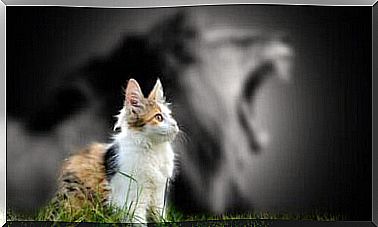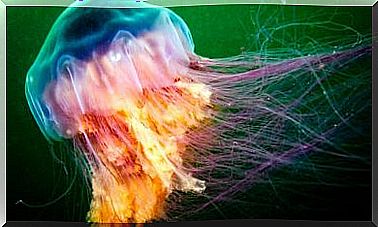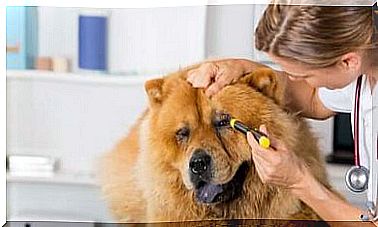Three Mental Illnesses In Cats
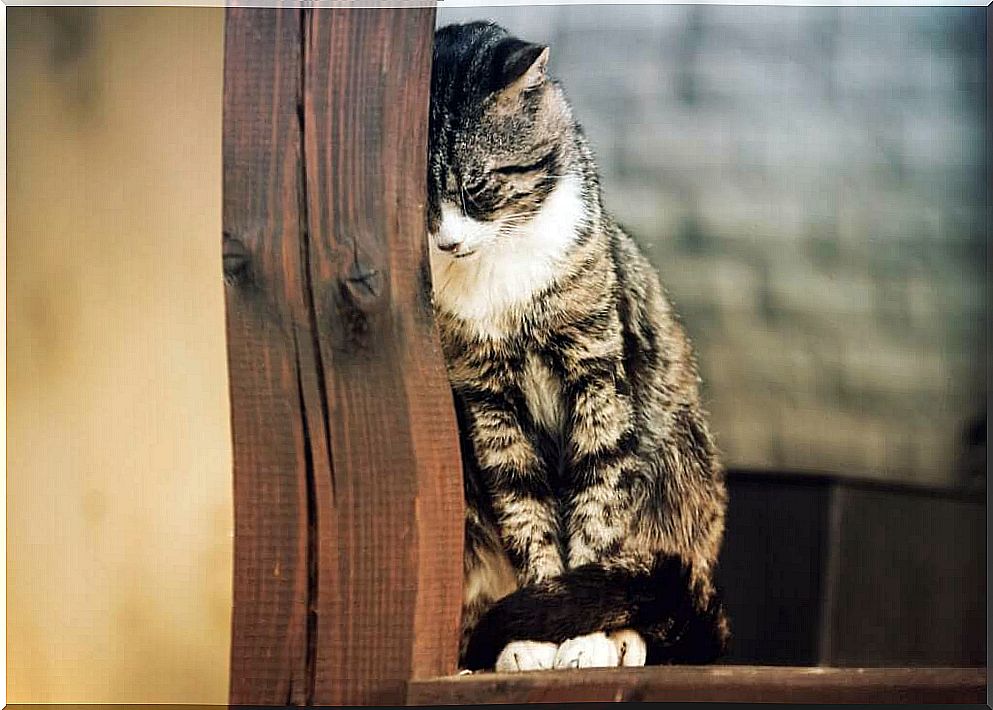
Behavioral disorders can be associated with mental illness. This fact is evident to humans, but animals can also develop pathologies that affect their physical and mental state. In cats, the most common mental illnesses are stress, depression and epilepsy.
All these changes have different origins and treatments. If, as a cat’s guardian, you suspect that the feline has similar symptoms, it is necessary to take the cat to the veterinarian or consult a specialist in feline behavior.
Next, we’ll introduce the three most common mental illnesses in domestic cats.
1. Stress in cats
Stress in cats can also seriously damage the health of these animals as it continually affects the immune system and can even cause eating disorders, alopecia and bizarre behaviors.
A stressed cat can become aggressive and exhibit compulsive and repetitive behaviors such as stereotypies. Other clear signs of stress are:
- Do not use the litter box.
- Mark the furniture in the house, both with urine and with your nails.
- Show hyperactivity.
- Meowing excessively.
- Increase or decrease in self-care. Excessive licking can cause bald patches on the skin, which is known as psychogenic alopecia. A large intake of hair can also affect the digestive system.
Some common causes of stress can be changes in space or routine, the arrival of other animals in the home or lack of sufficient stimulation due to poor environmental enrichment.

To treat a stressed cat, you can make it easier to adapt to new changes with the help of pheromones.
In addition, you can also avoid this feeling by making a good presentation if new members are incorporated into the family or by improving your environmental enrichment with new resting places, toys, scratching posts, windows (always closed) where he can look out, etc. .
Stress may not fall into the category of mental illness in cats, but it is certainly one of the main triggers of physical and mental disorders.
2. Depression in cats
Depression is a common feline illness and often goes unnoticed. Cats are very sensitive animals, and any change can affect your life more than we think.
The symptoms of depression in felines can be camouflaged with the habits of a calm cat, but we shouldn’t minimize them as depression can affect their health. Some signs of this pathology are as follows:
- Sleeps longer than normal.
- Apathy. The animal loses interest in the environment, does not interact with its objects or with other animals or people.
- Stop cleaning yourself.
- Do not use the sandbox.
- He is elusive or irritable when we try to relate to him.
The lack of freedom – especially if you are a cat used to going out – a change of house, being alone a lot, the loss of a family member (be it a person or another pet), the development of an illness, the absence of stimuli or a poor diet are some of the reasons that can trigger depression in cats.
Consult your veterinarian if you think this is the case with your feline and never give any medications on your own. Stress and depression can be treated in many cases by taking special care of the animal’s surroundings.
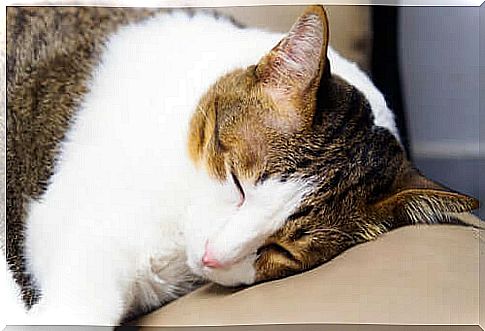
3. Mental illnesses: epilepsy in cats
Epilepsy is a neurological disorder that produces transient seizure episodes. Seizures are not always synonymous with epilepsy, as they can also arise due to endocrine, metabolic, cardiovascular diseases or acute pain.
We only talk about epilepsy when the seizures are of intracranial origin. As soon as the veterinarian confirms the feline’s epilepsy, he tries to discover the triggers of the crises or if, on the contrary, it is an idiopathic epilepsy, that is, with no known causes.
In cats, only between 15 and 25% are cases of idiopathic epilepsy. Therefore, any type of pathology that can produce epilepsy with an organic cause is very important:
- Feline Infectious Leukemia Virus (FeLV).
- Feline Immunodeficiency Virus (FiV).
- Toxoplasmosis.
- Tumors.
- Malformations.
Idiopathic epilepsy usually appears in cats between one and three years of age, and animals generally do not show abnormalities between seizures. Thus, eliminating the seizures, it is difficult to present symptoms in the veterinary consultation.
Also, because these are such sudden and exaggerated movements, those responsible for epileptic cats tend to be less than objective when describing what happened to their pet. The attacks are usually short, lasting no more than a minute, and when they are finished, the animal seems to have fully recovered and usually goes directly to its feeder.
If you have ever witnessed an epileptic seizure or if your cat has had seizures even once, you should go to the veterinarian for a neurological examination on your pet.
Epilepsy can be treated with medication (it is not curable), but the treatment reduces the frequency of seizures and provides a better quality of life for the animal.
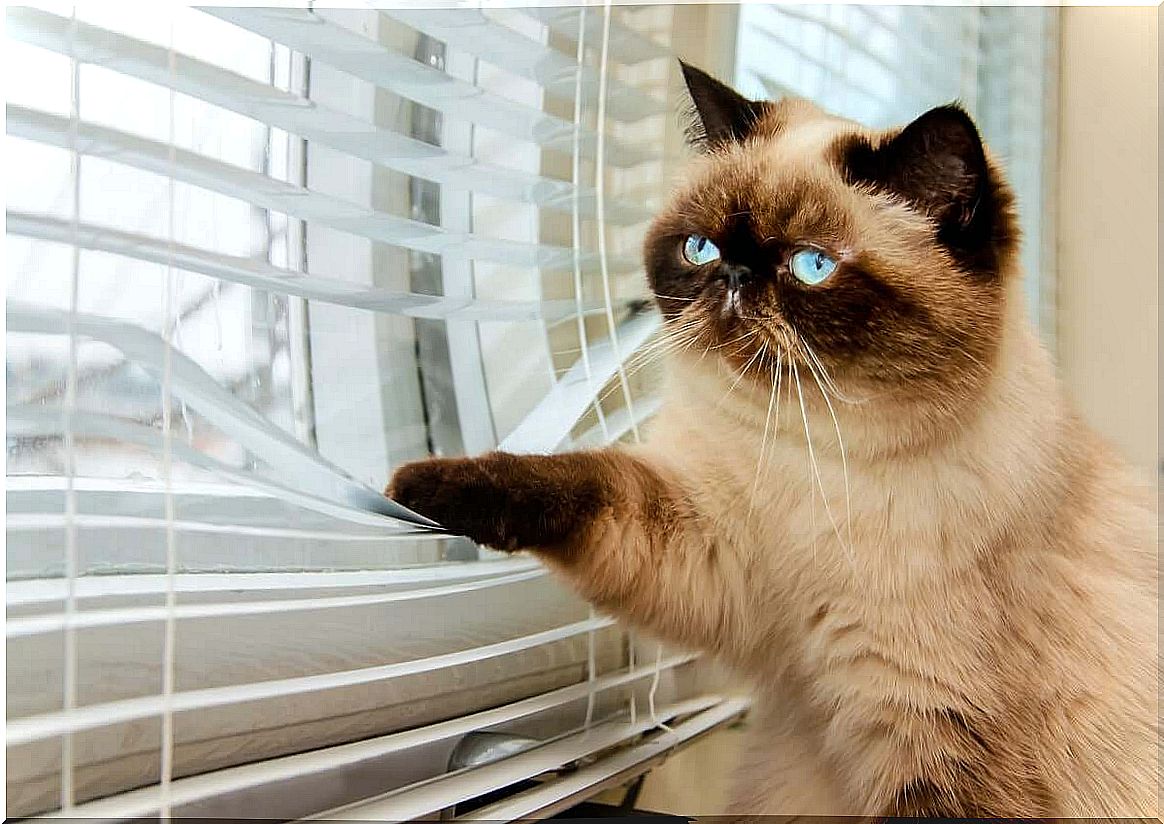
As you’ve seen, cats can suffer from mental illnesses, most often triggered by stress. The symptoms in these cases are very similar and you should pay attention to them before the problem gets worse.

